Intonation has been a hot topic for the blog and in the lessons studio lately. Besides the challenge of getting a pure tone on a violin, viola, cello, or bass, it’s hard to cover up a note that’s just not in tune. In my recent post Improve Your Intonation Now I talked a lot about the importance of listening and gave a plethora of examples for how we might listen better during and in preparation for our practice. However, if you have limited time and want to make the most of it, the following 4 step process has been very effective for my students:
- Listen to a good recording of the piece, exercise, scale, or etude you’re trying to master (ask your teacher if you’re not sure what to listen to) and hum along, either internally or out load. I personally find it helpful to engage the vocal chords, but not necessarily audibly. As we’re not all singers with a vocal range as vast as our instrument’s range, it’s probably counterproductive to try to sing along and hit all the actual pitches. However, if we can imagine we’re stimulating the vocal chords as if we’re speaking or singing, which takes being very engaged mentally, musically, and expressively, we seem to get just as much if not more of the benefit. A way to start the process may be to hum softly, then completely silently. At that point we’ll likely have the right feel. Listening passively is quite different than expressing after all. We have to become the musician who can perform such beautiful music, even if we feel like we’re faking it at first.
- Immediately after listening, try to recreate the sound of the melody or exercise in your head. Can you still hear it? If not, repeat steps 1 and 2 as many times as it takes to hear the melody internally. This could take a few days or weeks for the rare person who has never had a melody stuck in her head before (lucky you!), but should come fairly quickly for most, at least for short chunks of music. It can take a while for anyone to build up a strong internal recording of an entire concerto, and most will find a few iffy spots even for a piece that’s fairly familiar.
- Play along with the recording, trying to listen to the other player and your part equally. You might not be able to fix intonation issues on the fly, but listen carefully for the telltale sign of mis-matched tuning - that dissonant “hammering” or sense of an uncomfortable pulse in your eardrum. Unison harmonies (the same pitches sounded together) should sound perfectly smooth until it’s impossible to tell them apart. I’ve told my students that it’s like you and your clone, versus a slightly off unison which is you and your worst enemy. If you’re finding a lot of tuning issues, double check that your instrument is tuned and your left hand is in the right starting place, and run through steps 1-3 back to back for a short section of the piece or exercise. There will likely only be a few offending notes, but they can easily sour the whole phrase. It may take time to identify which specific notes need to be altered. Issues are common with notes played with a particular finger we’re having problems with, any accidentals, a less familiar finger pattern, or the arrival note in a shift.
- Play on your own and record it (audio or video). When you listen back, does your intonation match your internal recording? If not, rinse and repeat :)
The beauty in this process is that it gets to the heart of most intonation issues - not being able to accurately hear, reproduce internally, and therefore direct our bodies to play the right notes on our instrument. It’s a process that is also useful for being able to better reproduce a pure tone, articulations, phrasing, rhythm, and vibrato, to name a few! Like any language, we have to immerse with native speakers to absorb all the nuance and become truly fluent.
While this ability to reproduce music in our heads, also known as audiation, might be the foundation for great intonation, it’s not the entire picture. From there, “muscle memory” does play a role in intonation, but again, if we can’t imagine the sound of the notes away from our instrument, no amount of muscle memory will help us actually find the pitches consistently.
Besides the time it will take for the ear to train the muscles to find the right spots, some intonation issues stem from tension, an unbalanced left hand, or even a stiff left shoulder. When intonation during shifts is the issue, not having a good sense for the reference points in the new position and the distance between can cause us to miss the shift even if we can hear the note we’re striving to reach. These are all topics to explore in depth and with an experienced teacher, as each issue can present in idiosyncratic ways.
Happy Practicing!

